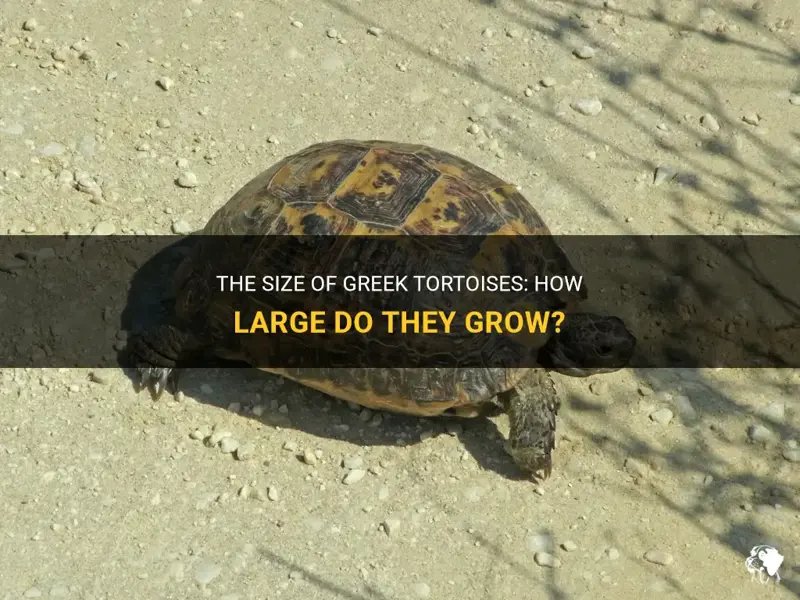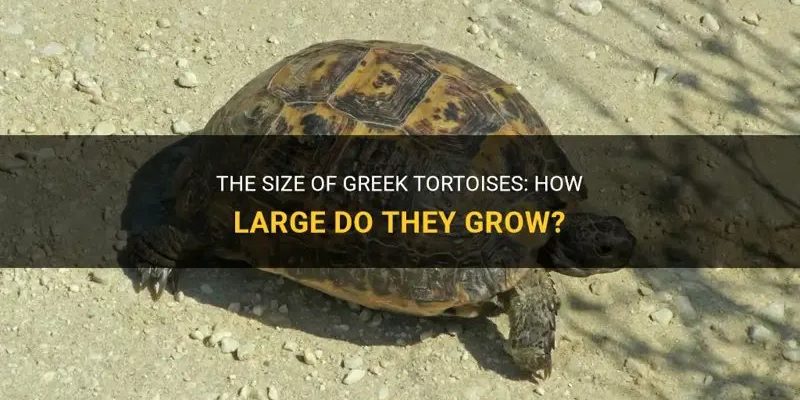
Imagine measuring a tortoise like you would a loaf of bread; they can grow quite a bit larger than you might expect! While they’re not the largest tortoise species out there, they do have some impressive dimensions that are worth knowing about. Let’s dive into the world of Greek tortoises and explore how big they actually get, along with some other neat facts along the way!
Understanding Size Ranges of Greek Tortoises
Greek tortoises fall into a moderate size category among tortoise species. Generally, you can expect them to grow anywhere between 6 to 10 inches in length when they reach adulthood. Here’s the thing: their size can vary based on several factors, like diet, genetics, and habitat.
Most commonly, male Greek tortoises tend to be on the smaller side, often reaching lengths of around 6 to 8 inches, while females usually grow larger, averaging 8 to 10 inches. Some exceptional individuals might even break the 10-inch mark! So if you’re planning to adopt one, keep in mind that they’ll require adequate space—not just in your home, but in their habitat as well.
Factors Affecting Their Growth
Several elements can influence how big a Greek tortoise will get. Here’s what you should consider:
- Diet: A well-balanced diet is crucial. These tortoises thrive on leafy greens, weeds, and vegetables. Poor nutrition can stunt their growth.
- Environment: Greek tortoises need the right habitat. A spacious area with places to bask and hide can promote healthy growth.
- Genetics: Just like humans, genetics play a role. Some tortoises may naturally be larger or smaller than others.
As you can see, providing a proper environment and nourishment is essential for reaching their full size potential!
Comparing Size with Other Tortoise Species
It might be interesting to compare the Greek tortoise with other tortoise types. For instance, the African Spurred Tortoise can reach sizes of up to 30 inches—that’s quite a difference! While Greek tortoises are on the smaller side, they’re often favored by pet owners due to their manageable size and charming behavior.
Here’s a quick comparison:
| Tortoise Species | Average Size |
|---|---|
| Greek Tortoise | 6 to 10 inches |
| African Spurred Tortoise | Up to 30 inches |
| Star Tortoise | 8 to 12 inches |
This comparison highlights how Greek tortoises are more suitable for smaller living spaces, making them a popular choice for many pet lovers.
Life Expectancy and Size Connection
You might be wondering, “How does their size relate to how long they live?” Well, the good news is that Greek tortoises are known for their longevity. They can live for 50 years or more in the right conditions!
Their size can influence how quickly they reach maturity. Typically, Greek tortoises don’t reach their full adult size until they are around 5 to 10 years old. This slower growth means a longer time for you to enjoy their company. However, their longevity also means you need to commit to their care for many years.
Signs of a Healthy Greek Tortoise
When caring for your Greek tortoise, keeping an eye on their size progression and overall health is crucial. Here are some signs of a healthy tortoise:
- Active Behavior: A healthy tortoise is usually active and shows interest in food.
- Clear Eyes: Watch for clarity in their eyes; cloudy eyes can indicate health issues.
- Firm Shells: Their shell should feel solid without any soft spots, which can be a sign of dietary deficiencies.
Monitoring these aspects will give you peace of mind as you watch your tortoise grow!
Creating the Right Environment for Growth
To help your Greek tortoise reach its full size, you’ll need to create an ideal habitat. Here are some key points to consider:
– Space: A larger enclosure allows for movement and exploration. A minimum of 40 square feet is recommended for adult tortoises.
– Temperature: Greek tortoises are ectothermic, meaning they rely on external heat sources. Ensure their environment mimics their natural habitat with basking areas of around 90°F.
– Humidity: They thrive in a dry environment, but a little humidity is still necessary. Aim for levels around 50-70%.
You might also want to add some natural elements like rocks and plants to make their space more enriching and stimulating.
Feeding for Optimal Growth
A proper diet plays a huge role in your tortoise’s growth. Here’s how you can balance their meals:
– Leafy Greens: Kale, collard greens, and dandelion greens are excellent staples.
– Vegetables: Carrots and bell peppers can be offered occasionally in moderation.
– Calcium Supplements: These are essential for shell health, especially if they don’t get enough from their food.
Just remember, avoid feeding them high-protein foods like fruit or meat, as it can lead to obesity and other health issues.
Final Thoughts on Greek Tortoise Size
In summary, Greek tortoises are fascinating creatures that typically range from 6 to 10 inches in length. While they might not be the biggest tortoises out there, their charm and longevity make them beloved pets for many. By providing a balanced diet, a spacious habitat, and attentive care, you can help these tortoises thrive and grow.
So, whether you already have a Greek tortoise or are thinking of welcoming one into your home, understanding their size and needs will help ensure a happy, healthy life for your shelled friend. After all, growing with your tortoise can be a rewarding journey!

